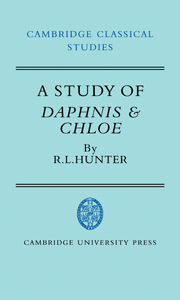Summary
The manuscripts of Longus' novel most commonly refer to the work as ποιμϵνικὰ τά πϵρὶ [or κατὰ] Δὰφνιν και χλόην or simply ποιμϵνικὰ, but once as αὶπολικὰ τὰ κατὰ χλόηρ και Δὰφνι,ν and (in the colophon in the Florentine manuscript) as ποιμϵνικὰ τὰ πϵρὶ Δὰφνιν και χλόην Δϵοβιακὰ ϵρωτικὰ. In the manuscript tradition, the novels of Xenophon of Ephesus (τὰ κατὰ Άνθὶαν και Άβροκόμην ϵφϵσω,κὰ) and Heliodorus (ή χαρὶκλϵιχι, τὰ πϵρὶ Θϵαγένην και χαρὶκλϵιαν or Λιβωπικὰ τὰ πϵρὶ Θϵαγένην και χαρὶκλϵιαν) share with D&C a system of naming both by description and from the principal charac¬ters, whereas the novels of Chariton and Achilles Tatius are designated only by the names of the characters. The fact that later Byzantine novelists seem to have used only the personal naming system and that a scrap from a late second-century A.D. text of the novel of Lollianus (fr. A2a verso Henrichs) calls that work φοινικικὰ might suggest that most novels were originally given (presumably by their authors) des¬criptive titles such as Έφϵσιακὰ or Aὶθιοπικὰ and that the personal titles came into use later. If this is correct, then the original title of D&C was Λϵσβιακὰ or ποιμϵνικὰ or Λϵσβιακὰ ποιμϵνικὰ, and it is relevant here to note that the final words of the novel are ποιμένων παὶγνια. With ποιμϵνικὰ may be compared the title of Petronius' comic romance, if that has been correctly explained as σατυρικὰ (i.e. σατυρικών libri): both of these titles keep the form of a ‘local’ title such as Έφϵσιακὰ (a form ultimately derived from epic and historiography) but are purely descriptive. Nevertheless, it seems improbable that one style only was in use in antiquity and that the others are wholly Byzantine or mediaeval.
- Type
- Chapter
- Information
- A Study of Daphnis and Chloe , pp. 1 - 15Publisher: Cambridge University PressPrint publication year: 1983

